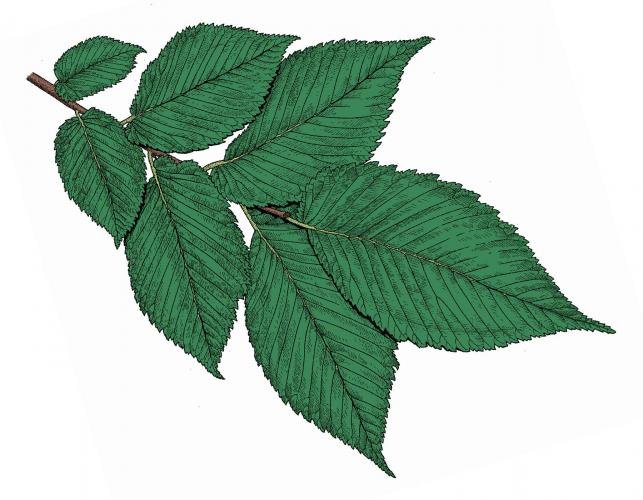
American Elm
American Elm
Botanical Name: Ulmus americana L.Family Name: Ulmaceae – Elms familyOrigin: East/Central United StatesAmerican elm (Ulmus americana) trees are also known as water elms, soft elms, white elms or Florida elms. They can be found throughout eastern and central North America as far south as northern Texas and Florida.
Once one of the largest and most prevalent of the North American elm species, the American Elm was preferred as an ideal shade tree for urban roadsides. It is especially susceptible to Dutch elm disease, a fungal disease spread by bark beetles. The Dutch elm disease was accidentally introduced to the U.S. in Cleveland, Ohio in 1930.
The Dutch elm disease has made American elms somewhat scarce, and many more are expected to die. A remarkable grove of old American elm trees planted by Frederick Law Olmsted stands in Manhattan’s Central Park. Evidently, the grove survived because of its isolation in such an intensely urban setting. Another notable American Elm is known as the survivor tree in the Oklahoma City National Memorial tribute to the bombing of the Alfred P. Murrah Federal building. This tree was in the parking lot and survived the bomb blast.
The American elm's biology in some ways has helped protect it from extinction by the Dutch elm disease. The elm's seeds are largely wind-dispersed, and the tree grows quickly and begins bearing seeds at a young age. It grows well along roads or railroad tracks, and in abandoned lots and other disturbed areas, where it is highly tolerant of most stress factors. Elms have been able to survive and to reproduce in areas where the disease had eliminated old trees. There is hope that these elms will preserve the genetic diversity of the original population, and that they will eventually hybridize with Dutch elm disease resistant varieties that have been developed or that occur naturally. After 20 years of research, American scientists first developed Dutch elm disease resistant strains of elms in the late 1990s.
The American Elm grows fast in any type of soil and environment. It has moderately dense foliage and a symmetrical crown in a broad or upright vase shape. This distinctive growth form makes the tree so valued for planting along streets. Elms planted on opposite sides of a street arch and blend together into a leafy canopy over the pavement.
American Elms planted on the national mall in Washington DC to shade the paths
The American elm grows up to 100 feet tall with a trunk diameter up to 4 feet. Its leaves grow in two rows where each leaf is 3-6 inches long and 1-3 inches wide. The leaves are elliptical and abruptly long pointed, with doubly saw-toothed edges. The leaves turn bright yellow in autumn. The American elms bark is light gray and deeply furrowed into broad, forking, scaly ridges. Fruit appears on the elm tree after flowering in the springtime. Elm tree seeds reach maturity at the end of the tree's flowering cycle and fall to the ground.
The American elm's wood is like oak, ranging from light to dark brown, but often includes some red streaks. The wood is coarse, hard, and tough, with interlacing, contorted fibers that make it difficult to split or chop and cause it to warp after sawing. Accordingly, the wood originally had few uses, such as making hubs for wagon wheels. Later, with the advent of mechanical sawing, American elm wood was used for barrel staves, trunk-slats and hoop-poles. Today the wood is used for boxes, baskets, furniture, hockey-sticks, veneer, wood-pulp and papermaking.
The American elm has a shallow, moisture-loving root system, which is known to overrun sewage pipelines, drainpipes and foundations. Elms of all kinds are notorious for dropping thousands of tiny papery seeds. The seeds aren't easy to rake, they stick to grass and in bare spots of the lawn and on the driveway. They also pile up in the gutters. Generally, they make a mess.


